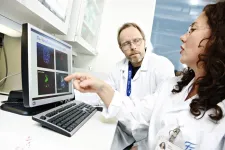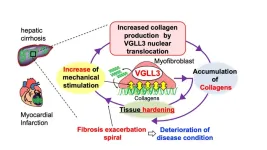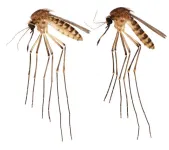As the search for high-quality pharmaceutical drugs continues, researchers also continue spending countless hours discovering the underlying mechanisms of drug action. Knowing various pathophysiological mechanisms dramatically expedites the process of drug discovery. A recent example includes the discovery of the broad-spectrum anti-inflammatory effects of inosine, a nucleoside found in transfer RNAs, by researchers in China. These findings were made available online on 22 October 2022 and subsequently published in Volume 13, Issue 1 of Journal of Pharmaceutical Analysis (JPA) on 1st January 2023.
The corresponding author, Yue Gao, from the Beijing Institute of Radiation Medicine and Tianjin University of Traditional Chinese Medicine says, “Severe acute respiratory syndrome coronavirus 2 (SARS-CoV-2)-induced cytokine storms constitute the primary cause of coronavirus disease 19 (COVID-19) progression, severity, criticality, and death. Glucocorticoid and anti-cytokine therapies are frequently administered to treat COVID-19 but have limited clinical efficacy in severe and critical cases.”
While attempting to develop effective treatment modalities for COVID-19, the researchers made a remarkable discovery. Using a mouse model, the researchers demonstrated the therapeutic effects of the broad-spectrum anti-inflammatory agent inosine. More specifically, they found that inosine was able to downregulate the inflammation-promoting interleukin (IL)-6, upregulate the anti-inflammatory IL-10, and improve acute inflammatory lung injury caused by multiple infectious agents.
Offering more details, their study suggests that inosine appreciably improved survival in mice infected with SARS-CoV-2 and hindered TANK-binding kinase 1 (TBK1) phosphorylation indirectly by binding stimulator of interferon genes and glycogen synthase kinase-3b. It also inhibited the activation and nuclear translocation of the downstream transcription factors, interferon regulatory factor and nuclear factor kappa B, as well as downregulated IL-6 in the sera and lung tissues of mice infected with lipopolysaccharide, H1N1, or SARS-CoV-2.
Speaking about these remarkable findings, Dr. Gao says, “Inosine is potentially an excellent broad-spectrum anti-inflammatory agent. Our study empirically demonstrated that inosine administration improved survival in severe SARS-CoV-2 infection through its immunomodulatory effects.”
The researchers concluded that inosine administration warrants further clinical investigation. According to them, inosine therapy may exert distinct anti-inflammatory effects in patients with severe or critical COVID-19. The researchers also identified TBK1 as a promising target for inhibiting cytokine storms and for mitigating acute inflammatory lung injury induced by SARS-CoV-2 and other infectious agents.
Similar investigations into the workings of pharmaceutical drugs in the recent past have been published in JPA. For instance, Gu et al. recently showed that compounds inhibiting disruptor of telomeric silencing-1-like (DOT1L) diminished the demethylation of histone H3 lysine 79 and inhibited the malignant behavior of uveal melanoma (UM) cells. Although it is known that aberrant histone methylation contributes to the development of life-threatening UM, an eye cancer, the underlying mechanism of histone methylation in UM was not known thus far. This novel discovery paves the way for the development of the next generation of therapeutics targeting UM. As Xiang Gu from Shanghai Ninth People's Hospital, observes, “Our research reveals a novel targetable DOT1L-nicotinate phosphoribosyltransferase oncogenic mechanism, broadening the current understanding of UM therapies.”
Similarly, Li and colleagues identified squalene epoxidase as a promising therapeutic target for combating drug-induced hepatotoxicity, injury caused to the lungs by certain medications. Talking about their study, the author Zhiqi Li from Beijing University of Chinese Medicine says, “We elucidate the hepatotoxicity mechanism of Paris polyphylla, commonly used in traditional herbal medicines, and provide a reference for its safe clinical use. These results may help to modify the structure of related chemical components responsible for the toxicity of polyphyllin 1, the active ingredient of Paris polyphylla, and make its clinical use safer by reducing its toxicity.”
In addition, Guo and co-authors were able to demonstrate the promising antitumor efficacy of the supramolecular nanoreactor “DOC@TA-Fe3+” in a mouse model of colorectal cancer. The nanoreactor developed by the team was shown to rapidly accumulate at the tumor site following injection via the tail vein, attesting to its rapid transportability to the tumor tissue for cancer therapy. Speaking on behalf of the entire team, author Min Mu from West China Hospital, Sichuan University says, “The nanoreactor provides a new strategy for drug delivery and provides a reference for clinical research.”
Collectively, these cutting-edge studies pave the way for the identification of novel pathophysiological pathways, thus strongly boosting the process of drug discovery.
***
Reference
DOI: https://doi.org/10.1016/j.jpha.2022.10.002
Authors: Ningning Wanga, b, Entao Lic, Huifang Denga, Lanxin Yuea, Lei Zhoua, Rina Suc, d, Baokun Hee, Chengcai Laia, Gaofu Lia, Yuwei Gaoc, Wei Zhoua, Yue Gaoa, b
Affiliations:
aDepartment of Pharmaceutical Sciences, Beijing Institute of Radiation Medicine, Beijing, 100850, China
bTianjin University of Traditional Chinese Medicine, Tianjin, 301617, China
cChangchun Veterinary Research Institute, Chinese Academy of Agricultural Sciences, Changchun, 130122, China
dCollege of Veterinary Medicine, Jilin Agricultural University, Changchun, 130022, China
eDepartment of Gastroenterology, Shanghai General Hospital, Shanghai Jiao Tong University School of Medicine, Shanghai, 200080, China
END





